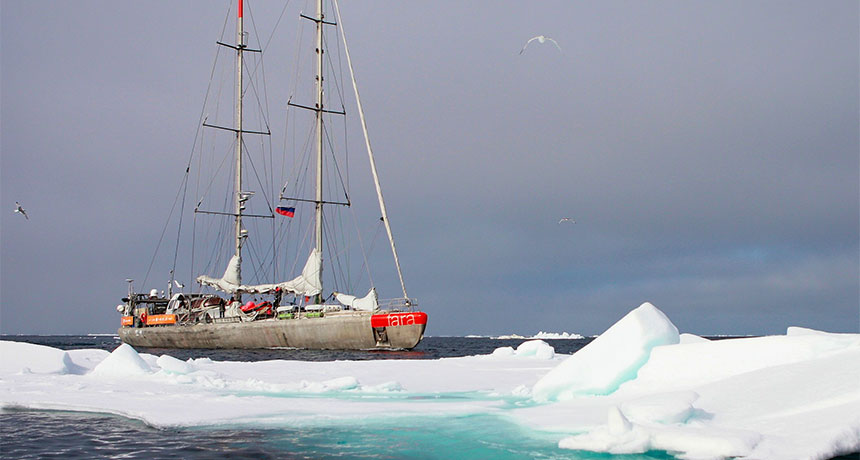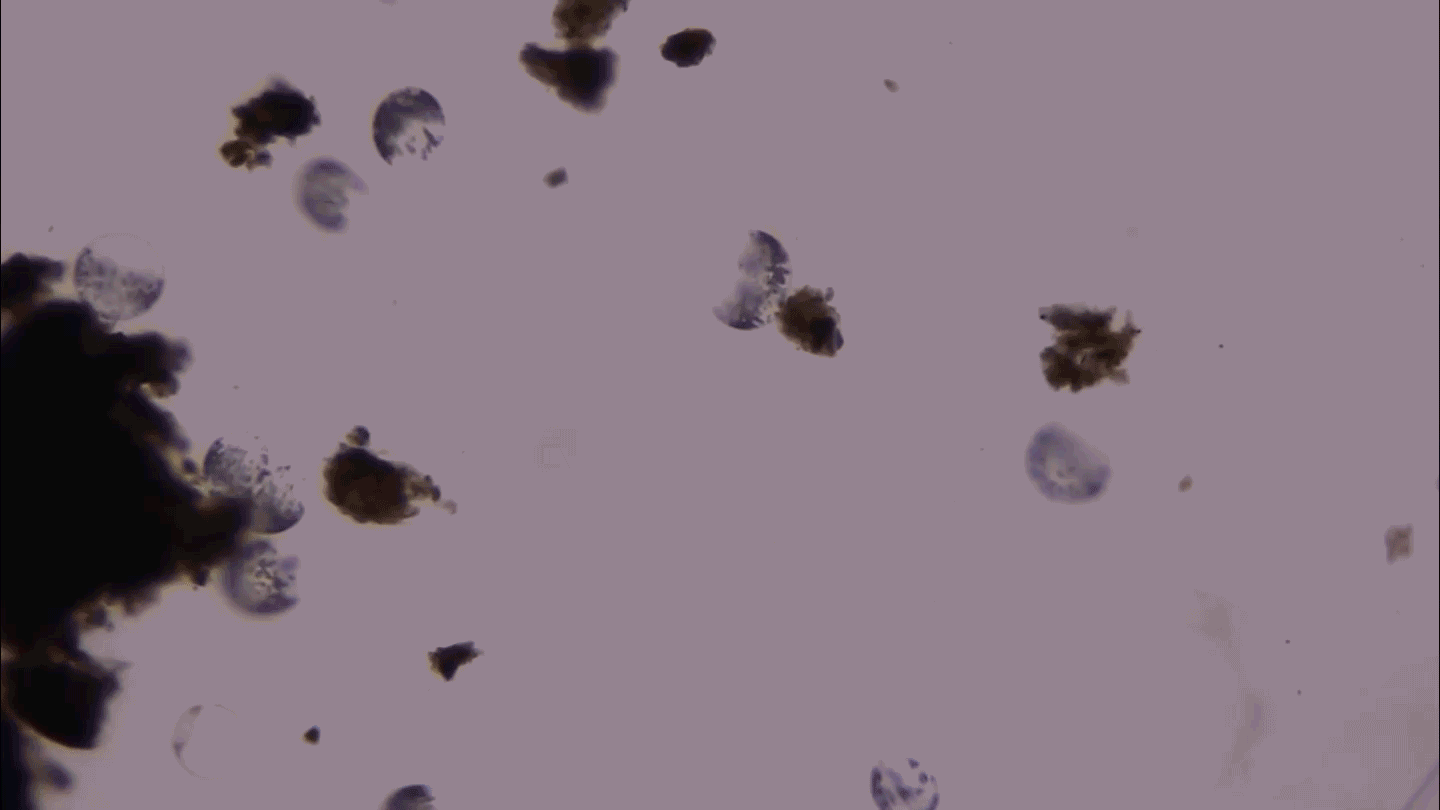
ON THE VIRUS SEA Scientists spent three years sailing an aluminum boat called Tara (pictured) around the world’s oceans. Among the team’s major findings is that the Arctic is a treasure trove of viral diversity.
A. Deniaud Garcia/Tara Oceans Foundation







